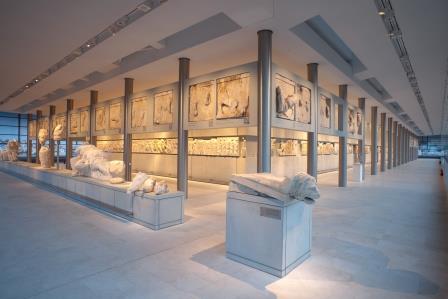2016 is a significant year for the Parthenon Marbles and for campaigners all over the world that have campaigned tirelessly, selflessly for the reunification of a peerless work of art.
The Parthenon temple on the Acropolis of Athens, constructed between 448 and 432 BC, with its sculpted pediments, metopes and frieze is universally regarded as the high point of classical art.
It survived largely intact until suffering bomb damage in 1687 during the Ottoman occupation of Greece. Thereafter the damaged structure and fallen masonry lay relatively untouched.
In 1801 Lord Elgin, then British ambassador to the Ottoman court, obtained limited licence for his agents to collect some pieces of stone from the acropolis to adorn his home in Scotland.
They thereupon set about cutting sculpted blocks from the metopes, pediments and frieze of the Parthenon. Between then and 1805, when the authorities in Athens forbade further collecting, they collected numerous shiploads of sculptures which were dispatched to England. There was much contemporary criticism of Elgin’s actions on grounds of dubious legality and moral impropriety.
In 1811, financially stressed by the costs of his enterprise, Elgin offered to sell the marbles to the nation for £62,400. The matter was considered by a Select Committee in 1815 and in 1816 they were purchased by Act of Parliament for £35,000 and placed in the trust of the British Museum.
The Greek State has demanded the repatriation of these marbles since it gained full independence in 1832. Currently they demand specifically 92 pieces held by the British Museum including 15 metopes, 17 pedimental sculptures and 80 metres of frieze. These amount to over 50% of the surviving sculptures. Apart from a few isolated pieces in other museums, the remainder is in Athens.
 Neil Kinnock once famously described the Parthenon with its missing sculptures as “a gap toothed smile”. This description applies no less to the current display of the Parthenon Sculptures in the glass walled Parthenon Gallery of the Acropolis Museum. This has been described as “the one place on earth where it is possible to have a simultaneous visual and aesthetic experience of the Parthenon and its sculptures”.
Neil Kinnock once famously described the Parthenon with its missing sculptures as “a gap toothed smile”. This description applies no less to the current display of the Parthenon Sculptures in the glass walled Parthenon Gallery of the Acropolis Museum. This has been described as “the one place on earth where it is possible to have a simultaneous visual and aesthetic experience of the Parthenon and its sculptures”.

The Parthenon is a fixed monument. It is a UNESCO World Heritage Site. Its sculptures are integral structural components. Half have been removed with cutting equipment and are now displayed 1500 miles away in the British Museum. This is a unique cultural outrage. The onus of justification is on NOT reunifying them.
The Parthenon and its sculptures are iconic symbols of Greek cultural identity. There are strong cultural, ethical, and museological grounds for reunifying them. If this cannot be done consensually, let it be determined by a process of mediation.





Comments powered by CComment